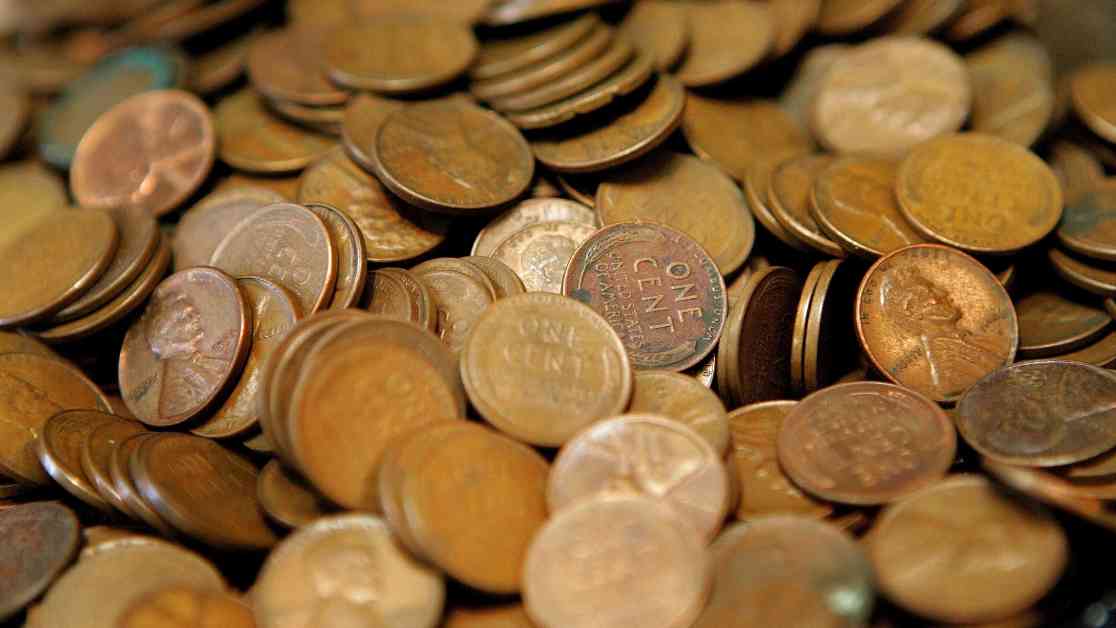The U.S. penny has been a topic of debate for years, but recent events have pushed the conversation to the forefront. President Donald Trump issued an order to halt the minting of new pennies, citing the wasteful nature of producing a coin that costs more than its actual value. This initiative follows Elon Musk’s push to eliminate the penny, marking a shift in government policy that has left many economists and financial experts unfazed.
The Impact of Penny Phaseout on the Economy
The decision to discontinue the production of pennies has sparked discussions about its potential impact on the economy, savings, and pricing in America. According to the Federal Reserve, there are over 114 billion pennies in circulation, amounting to $1.14 billion, which represents a mere fraction of the total money in circulation. However, the cost of producing pennies, estimated at $192 million annually, has raised concerns among economists.
David Gulley, an economics professor at Bentley University, highlighted the economic burden of manufacturing pennies, stating that the cost of producing a single penny is around three cents. This high cost is exacerbated by the fact that millions of pennies are lost or discarded each year, necessitating a continuous production cycle to replace them. The inefficiency and expense associated with producing pennies have made many question the necessity of maintaining this coin in circulation.
The Penny’s Impact on Prices and Inflation
One of the key implications of phasing out the penny is its potential impact on pricing and inflation. Rounding prices to the nearest five cents, in the absence of pennies, could lead to changes in the cost of small-ticket items. David Smith, an economics professor at Pepperdine University, pointed out that businesses may choose to round prices up or down, affecting consumer spending patterns. While some argue that rounding prices could lead to inflation, studies have shown that this effect is minimal and does not have a significant impact on the overall economy.
In Canada, which eliminated the penny in 2013, cash transactions were rounded to the nearest five cents based on the total transaction amount. This approach mitigated concerns about inflation and pricing discrepancies, demonstrating the feasibility of transitioning away from the penny in a controlled manner. Ajay Patel, a professor of finance at Wake Forest University School of Business, emphasized that while rounding prices may affect consumers, the long-term benefits of cost efficiency outweigh the short-term adjustments.
The Future of the Penny and Alternative Currency Solutions
Despite the decision to stop minting new pennies, the actual elimination of the penny from circulation is a gradual process that will unfold over several years. President Trump’s order does not mandate the immediate removal of existing pennies from the currency system, allowing time for consumers and businesses to adjust to the new pricing paradigm. While the financial services sector may not be significantly impacted by the absence of pennies, cash consumers, particularly those at the lower end of the economic spectrum, may experience changes in their day-to-day transactions.
As the U.S. transitions away from physical currency towards digital payment methods, the role of coins like the penny in everyday transactions is diminishing. While the elimination of the penny may lead to short-term challenges for some consumers, the long-term benefits in terms of cost savings and environmental impact are significant. Experts suggest that keeping an eye on other coins, such as the nickel, may be necessary as the currency landscape continues to evolve.
In conclusion, the decision to phase out the penny reflects a broader shift towards modernizing the U.S. currency system. While the immediate effects of this change may be felt by some consumers, the long-term benefits in terms of cost efficiency and environmental sustainability are likely to outweigh the initial challenges. As the nation adapts to a new era of currency management, the impact of eliminating the penny on the economy, savings, and pricing will continue to be a topic of discussion and analysis in the years to come.

















